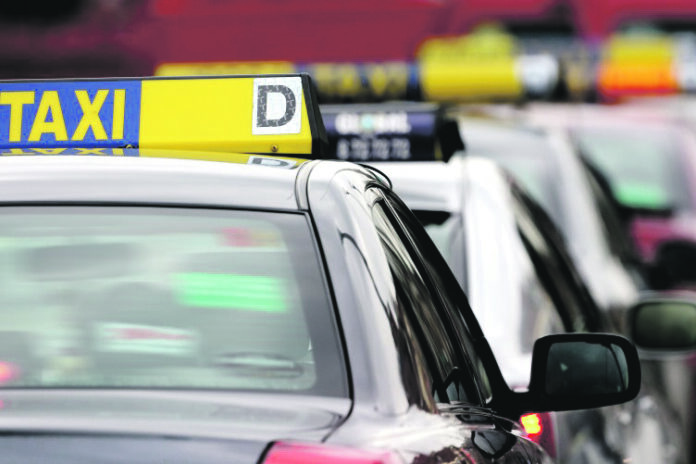
THE NUMBER of taxis available in Limerick has grown by just over 100 since 2019 – a number business sources say is completely inadequate for a growing population.
And while the numbers rushing to join the ranks of drivers in the Treaty City is underwhelming, elsewhere in the country numbers a have shrunk by 10 per cent despite tourism and population growth.
New figures from the National Transport Authority (NTA) reveal that 23 out of 26 counties have still not recovered their pre-Covid taxi driver numbers, with regional areas across Ireland hit hardest.
The figures show that despite Ireland’s population growing by 8.5 per cent from 2019 to 2024 and inbound tourism numbers rising by 5 per cent from 2023 to 2024, taxi driver numbers have remained stagnant or in sharp decline in many areas.
Nationally, the total number of taxi drivers has increased by only 1 per cent, while the actual taxi vehicle numbers operated by drivers have dropped 4.4 per cent from 2019 to 2025.
The figures show that taxi driver growth is overwhelmingly concentrated in Dublin, exacerbating existing inequalities and leaving both urban and rural communities, which have limited public transport alternatives, disproportionately disadvantaged.
Munster experienced slight overall growth (1.1 per cent) but has declined in four out of six counties
“We are still facing a taxi shortage crisis,” said Adrian Cummins, CEO of the Restaurants Association of Ireland and founding member of the Taxis for Ireland Coalition (TIC).
“It’s being hidden behind a modest urban recovery, but the reality in regional areas and at urban peak times is that people are stranded,” he said.
The TIC identifies the requirement for new taxis to be wheelchair accessible vehicles (WAVs) as the primary barrier to new drivers entering the market.
“WAVs typically cost over €60,000, and grant assistance from the NTA is highly oversubscribed. In 2025, the WAV Grant closed within 15 minutes of opening, following similar occurrences in 2024 and 2023,” Mr Cummins said.
“In rural Ireland, hospitality businesses are being devastated. Without taxis, people stay home. The WAV rule is locking out the very drivers we need. We need a modern, flexible, and inclusive taxi system. Right now, the system works for no one – not the drivers, not the passengers, and not our economy.”
Mr Cummins said that even when drivers choose to operate with a WAV, the reality is that the general taxi shortage means these cars are often out answering calls from people who don’t need an accessible car while people with disabilities are left waiting.
The TIC is calling for the removal of the WAV requirement for all newly registered small public service vehicles (SPSV), the retention and refocus of the WAV grant to serve actual WAV users, and the modernisation of the driver entry test, especially geography-based knowledge tests given the accessibility of modern technology and the development of a national taxi strategy that addresses rural accessibility.


